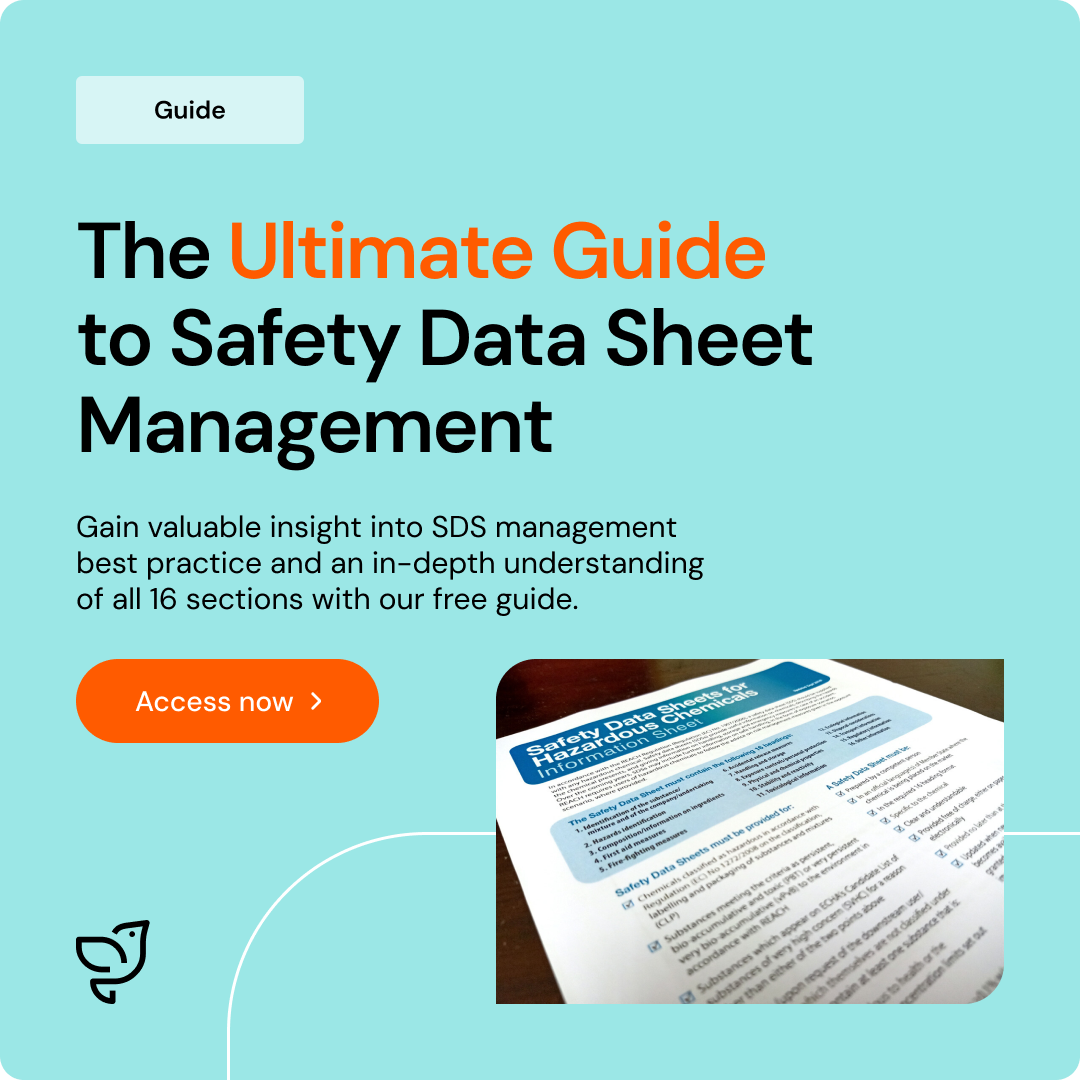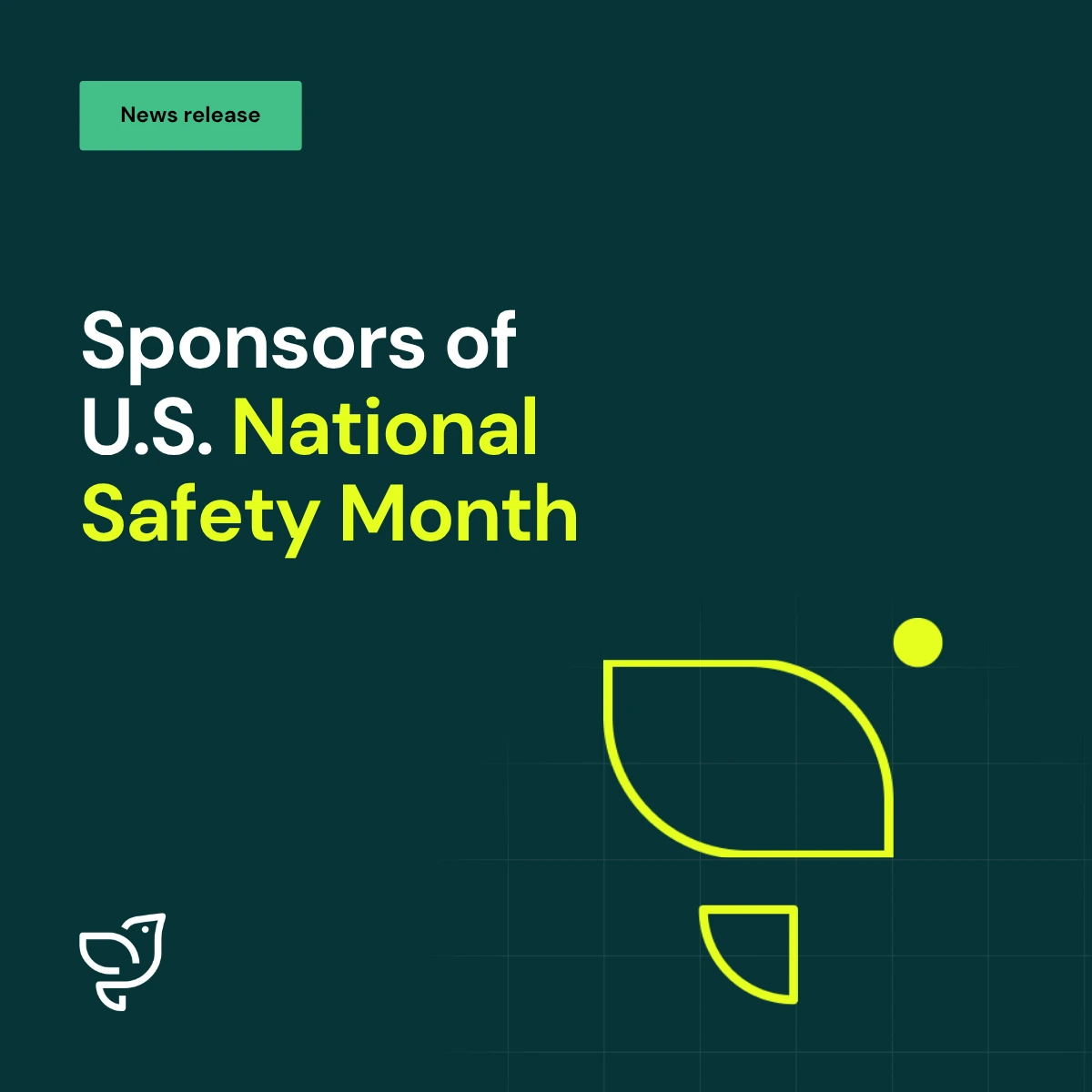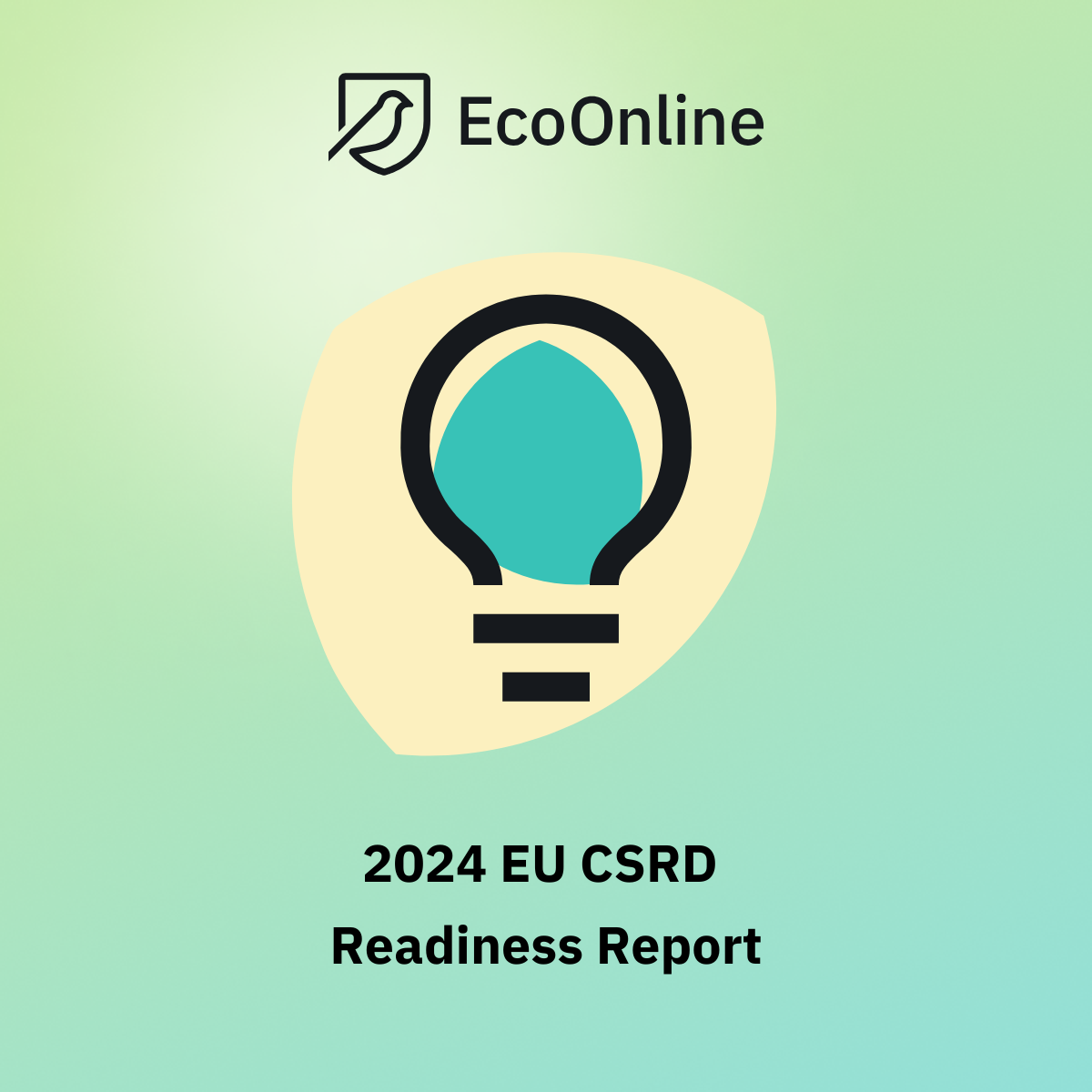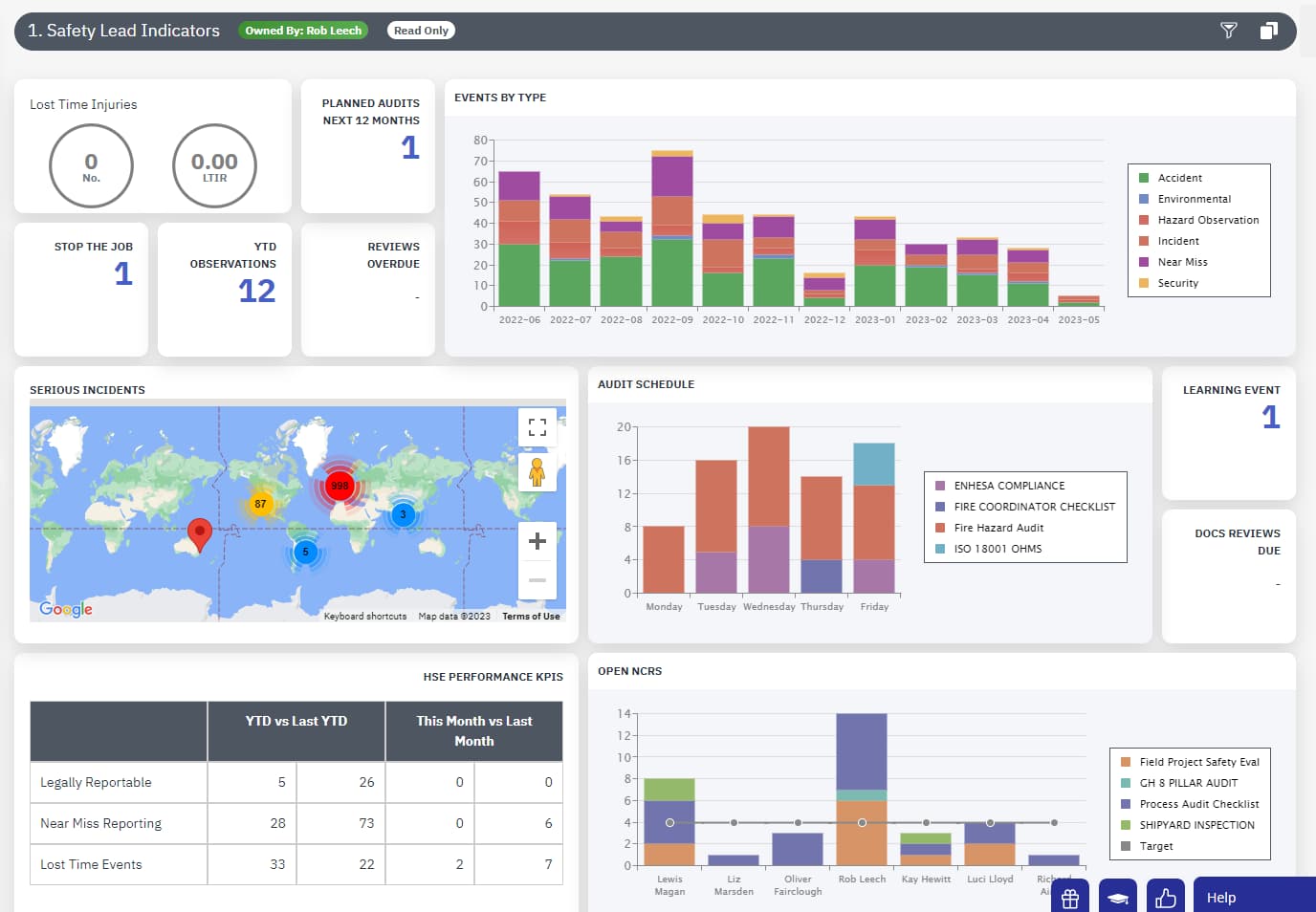Best Practice Advice on Safety Data Sheet Authoring

Updated April 2025.
Safety data sheets (SDS) are a vital requirement for businesses where employees’ contact with chemical substances can occur. As you might expect, an SDS must comply with strict regulations in most jurisdictions and should be subject to constant revision and updates therefore SDS Authoring within an organization is vital.
However, keeping potentially hundreds of safety data sheets updated is a time-consuming task, made all the more onerous by differing national requirements.
In a recent webinar EcoOnline Consulting Manager Sarah Ingle and Solutions Consultant Jack Cleaver took a closer look at some of the most common pitfalls in SDS authoring and how to overcome them. Continue reading for their key takeaways!
Some background on SDS Legislation
Before diving into our speakers SDS authoring best practice tips, its worth having a quick look at how legislation effects their content.
The majority of international SDS legislation is based on the Globally Harmonized System of Classification and Labelling of Chemicals (GHS), which has been adopted by 65 countries as of recording. It is currently on its 10th revision.
However as the GHS is not a law, this has led to inconsistent application across different countries. Certain countries may be operating on older revisions to the GHS, which can lead to SDS that are substantially different to those based on the most recent revisions made in 2023.
This highlights an important fact: 1 single SDS will not be appropriate for all territories.
The Brexit Example
A defining example of the challenges posed by different applications of the GHS is seen in post-Brexit UK and EU requirements. While some of the EU’s REACH (Registration, Evaluation, Authorization and Restriction of Chemicals) and CLP (Classification, Labelling and packaging of substances and mixtures) regulations have been adapted in the form of UK REACH and GB CLP, they do not perfectly match.
Since January 2021, the EU has adopted new changes to SDS including updates to information on endocrine disruptors and nanoforms of substances. These changes have not been introduced in the UK, although it should be noted that Northern Ireland will continue to comply with EU REACH requirements.
Its easy to see how all of this can make the SDS authoring process more complicated, but two key things to remember:
- If you are an importer of chemicals you need to ensure the safety data sheets comply with local legislation before placing on the market.
- One single SDS is not compliant for UK REACH and EU REACH.
Tip 1: Make sure ALL sections of a safety data sheet are completed
“We have to consider at the end of the day that people are actually using these safety data sheets to determine what safety measures they need to put in place. They are using them to create COSHH and chemical risk assessments, they are using them to determine what PPE is required to protect staff, emergency services are using the information to determine what to do in the event of an accident”
Sarah Ingle
A major problem that EcoOnline consultants like Sarah have encountered in client SDS is missing information or the inclusion of generic statements. All sections of an SDS should be fully completed with the most accurate information available.
Reputable information can be sourced from; raw material safety data sheets, testing data, manufacturer data, literature data, regulatory data bases. Remember that it must be specific to your product. Do not rely on a google search for your information, especially when it comes to a mixture SDS.
When writing your SDS, avoid the use of jargon or abbreviations and acronyms – use clear, concise language to convey the information. Avoid using vague language like “no other information”, “may be dangerous”, or “none known”.
Example of fully completed data fields:
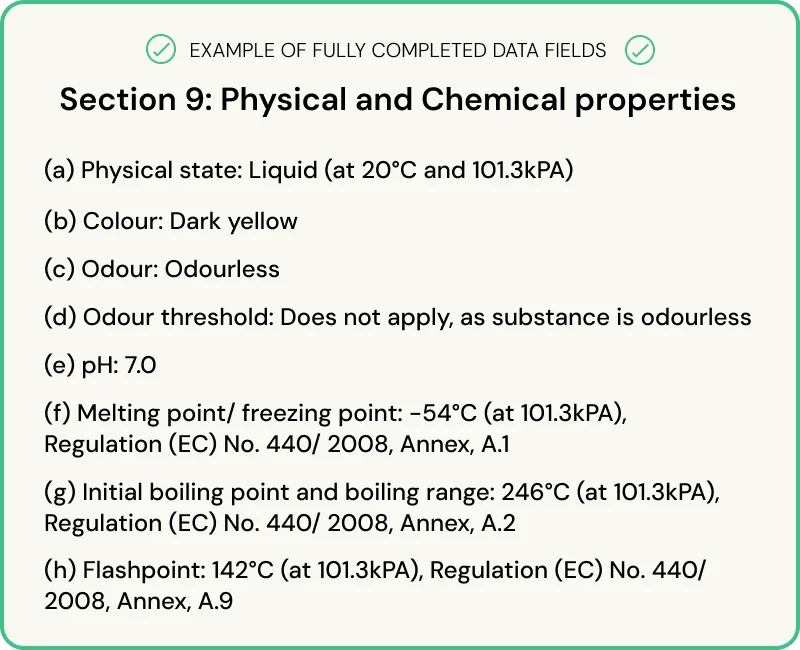
Example of incomplete data fields:

Note that in the USA where ‘trade secrets‘ are claimed as a reason for a specific chemical identity and/or exact percentage (concentration) of composition being withheld, a statement to that effect is required. A range can be included instead. It’s important that the claim of trade secrets be supported, as it may be challenged at some point.
In Canada certain information can be protected from disclosure on an SDS as ‘confidential business information’ (CBI) by filing a claim under the Hazardous Materials Information Review Act (HMIRA). Such filings are managed by Health Canada.
It should also be noted that in both the USA and Canada, manufacturers/ suppliers do not have to complete SDS sections 12-15. However, these sections must still be included in the SDS.
Tip 2: Keep information consistent throughout your SDS
Information must be kept consistent throughout all sections of an SDS. For example, if you include a corrosive hazard pictogram in Section 3, it would be incorrect to use the term ‘May cause irritation’. The Classification in Section 2 must agree with the information provided in Sections 9 to 12.
Some key things to consider:
First Aid: The precautionary statements listed in Section 2.2 of the SDS must correspond to the first aid measures listed in Section 4 of the SDS. Inconsistencies might lead to incorrect first aid measures being provided.
Chemical Storage: Section 7 of the SDS provides information on Handling and Storage. This should correspond to the use of the chemical listed in Section 1.2 and to the properties of the chemical listed in Sections 9 and 10. It is also important to take note of any information listed in Exposure Scenarios.
PPE: The PPE chosen to be listed in Section 8.2 of the SDS must reflect the hazards listed in Section 2 of the SDS as well as the ingredients listed in Section 3.
An SDS authoring system can simplify the process by providing a classification based on substance formation you input.
Tip 3: Keep your SDS updated
As legislative changes and updates to regulatory lists are very common, suppliers need to ensure that their SDS’ are updated. A supplier MUST immediately update a SDS if:
- New information becomes available on the hazards of a substance/mixture or on the risk management measures that need to be taken.
- An authorization has been granted or refused for a substance.
- A restriction has been imposed
Note that SDS only have to be updated if specific situations occur. In the case of new legislation, there is typically a 2 year grace period to comply. Suppliers also have to provide customers with an updated SDS if they have purchased the product in the previous 12 months. Dedicated software and newsletters can greatly assist in keeping track of these changes.
Tip 4: Make sure your translations are accurate
In the USA the Hazard Communication Standard (HCS) requires that an SDS be in English, while WHMIS in Canada requires both English and French versions of an SDS be available. Within the EU SDS must be provided in an official language(s) of the Member State where the chemical is placed on the market. Unfortunately, many suppliers do not comply with this measure.
Translations can be a cumbersome requirement for suppliers who sell in multiple jurisdictions. A run through google translate is not enough here – the translation must make sense in context to the reader. Relying on third party providers who are unlikely to understand relevant legislation is also a common problem seen by our consultants.
A good SDS authoring software that doesn’t rely on machine translations can help to alleviate the strain of this requirement.
Conclusion
Keeping on top of all requirements when creating safety data sheets can be a fulltime job in itself. Using a cloud-based system like ALMEGO to create your SDS saves both time and effort while ensuring you remain compliant.
The ALMEGO system supports over 48 languages, CLP calculations and the creation of hazard labels. Users can also generate Unique Formula Identifier (UFI) codes and submit directly to ECHA via our API.
Want to learn more about ALMEGO? Check out the software below:



